Pirate Codes & Writing Rules—When is a Flashback a Literary Device?
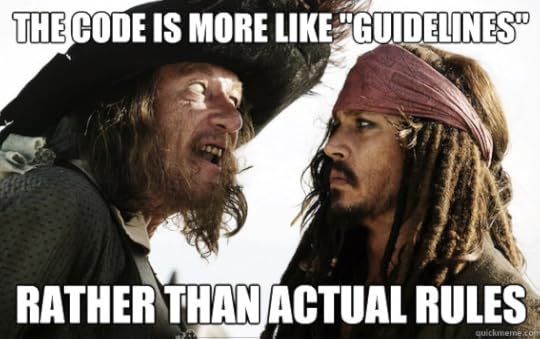
Pirate Code=Writing Rules. Clearer now? :)
Yesterday’s post stirred quite the debate and flurry of panic attacks, so today, we will delve a bit further into Le Mystique of Le Flashback. First of all, for future reference, I need to ignore all Facebook comments that begin with, “I haven’t read your post, but completely disagree…” Er? Ok. Here’s the thing. I play dictator on my blog, because it’s my blog and it’s FUN.
I’m a realist and I KNOW there is some writer out there who has broken every rule there is. But, bringing up every last exception is a confusing way to teach and a fabulous way to make your heads explode.
It’s like the “I before E Except After C (except for when you run a feisty heist on a weird beige foreign neighbor) Rule.”
If I give you guys the BASICS and explain WHY editors, agents and readers almost always dislike flashbacks, you know what is distressing about a flashback so you can avoid the pitfalls if you choose to employ a flashback.
…but still avoid them. Ok, I’ll shut up now.
Defining a Flashback
When is a flashback a literary device? Hint: Rhymes with…NEVER.
Oh, before y’all get your panties in a bunch, let me expound.
One thing that jumped out at me yesterday is that we don’t seem to all define the flashback in the same way. I see this with the term “antagonist” ALL THE TIME, which is why I have an entire class dedicated to un-confusing you. Yes, un-confusing is a word :P.
For instance, many writers use villain and antagonist interchangeably, but they aren’t interchangeable. A villain is only ONE TYPE of many variations of antagonists. Antagonists are not always bad and often they are the protagonist’s allies.
This is like saying an orange is a fruit, thus all fruits are oranges. Logical fallacy.
Flashbacks, to me, are when a writer either breaks a scene and jumps back in time to explain (and thus alleviate tension as in yesterday’s example). OR, a flashback is when another scene serves ONLY to explain another scene (thus again, alleviating present tension).
In the first type, we have a scene, which is action. Protagonist has a goal, but then X happens. The point of the scene is to make the reader wonder if the protagonist will reach the goal or fail. The more roadblocks, the better.
To Flashback to Yesterday’s Post…
In yesterday’s example, we had this GREAT, TENSE scene where a wedding planner is trying (rather unsuccessfully) to herd hungover bridesmaids to the wedding on time. Nothing is going well for the poor planner. WE LOVE IT. We are HOOKED! Yet, with no warning or a clear scene break, suddenly *screeching of tires* we are hurled back into an earlier conversation in a different place and time with totally different people when the bride-to-be decided to move the location from Napa to Mexico.
Huh?
What this did was:
1. Break the forward timeline.
2. Make the reader have to reorient to a new time/goal.
3. Introduced a new cast of characters and dialogue that had to do with a TOTALLY different goal that had nothing to do with herding half-drunk bridesmaids to a chapel on time (and also had me floundering to keep up with 10 names).
The going back in time did nothing for the plot except break the tension by explaining and add a bunch of characters who weren’t even in the present scene. There was no information in that minor flashback that could not have been done BETTER in forward gear.
We know Mom gave in and let the bride have the wedding in Mexico, because…we began the story IN MEXICO!
In fact, putting the flashback real-time actually raises the tension through the roof. Nothing like having Mom wag a finger and say I told you so to make a nervous bride’s hangover improve :P.
Another example.
I’m working on a trilogy. Any book within a series should be able to stand alone. In series, however, it can be very tempting to explain in case someone hasn’t read the earlier book(s). Don’t.
Romi (my protagonist) is shot in the first book. In Book Two, this is page ONE when my protagonist meets with a character from Book One:
“Romi Lachlann,” he said close to my ear then leaned back, studying me. “You look different.”
“I’d hope so.” I absently rubbed the scar on my ribs from the gunshot wound and poured myself a cup of black coffee from a large carafe.
Then, I continue the story. Sally forth!
Romi’s goal is to find out why, after 18 months of silence, someone from her past suddenly needs to see her. Yes, there is this teasing of the past, but I don’t stop and explain who shot her. I don’t lurch back to the final Big Boss Battle in Book One when she is on the floor begging for her life. I let the reader wonder.
Er? Gunshot wound? WTH happened?
If I stop mid-scene to explain, I confuse the reader and dilute the wondering. If I indulge in another scene back from when Romi was shot, I shoot myself in the foot.
Why would anyone 1) bother reading the first book or 2) keep turning pages to figure out what happened and how/why she was shot?
Additionally, my Book Two Romi is so paranoid she’s three steps away from wearing a tin-foil hat. If I go back and tell WHY, the story fizzles. Yet, by revealing details from what happened earlier in real-time (and when relevant to the current story problem), the reader eventually comes to understand the full depth of what Romi survived.
In fact, if I do my job properly, part of what will keep the new reader engaged is finding out what on earth transpired that tipped Romi off the deep end. For those who (hopefully) read Book One, her behavior is just an organic growth of the character/story they already know.
Also, if some people have read the first book, then I’m not trapping myself in an “As You Know, Bob Syndrome” when I withhold information. Why repeat details some readers already know and that would ruin tension for those who don’t yet have answers?
Flashbacks and Parallel Timelines are TWO Different Creatures
Flashbacks disorient, diffuse tension and can be cut without harming the story. All the information in the flashback can be explained in narrative or dialogue at a later point. No need to hit the “Reverse.” Your protagonist’s conflict isn’t in the past, but the present and future. The past has already happened, so readers CAN’T WORRY.
In my book, the reader knows Romi survives being shot. She’s drinking coffee and NOT a ghost. Flashing back to a bunch of pain, suffering, betrayal is self-indulgent melodrama. Her conflict is in the current problem—the large bounty for her head (literally).
A Parallel Timeline is NOT a Flashback
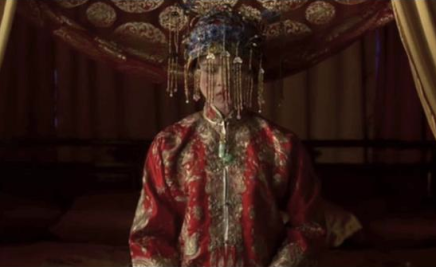
Image via Amy Tan’s, “The Joy Luck Club.”
Just because some scenes are set in an earlier time, doesn’t mean they are flashbacks. If we pull past and present apart then set the scenes side-by-side, we will see they exhibit three-act structure and eventually converge with the present in the final scenes of the story. Some examples are Fried Green Tomatoes, The Joy Luck Club, The Divine Secrets of the Ya-Ya Sisterhood, The Notebook and The Green Mile.
For instance, I love the example of Stephen King’s The Green Mile not only because it is a great story and superb example of what we are discussing, but the book and movie are very close. This movie would be a great study if you are so bold as to try parallel timelines. They are tricky and I am not so brave.
The Green Mile begins in 1999 with Paul Edgecomb in a Louisiana nursing home. Paul begins to cry while watching the movie Top Hat. When his elderly friend Elaine shows concern, he confesses the movie reminded him of his time as a prison guard in charge of the death row inmates at Cold Mountain Penitentiary during the summer of 1935.
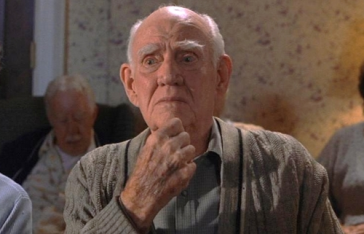
Old Paul Edgecomb.
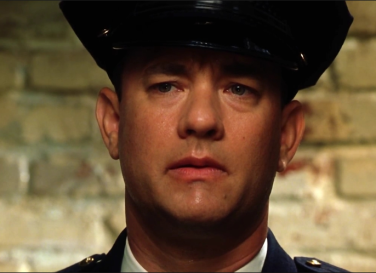
Young Paul Edgecomb.
One timeline follows Young Paul as a prison guard and his miraculous encounter with John Coffee. The other timeline follows Old Paul and his trials in the nursing home. It isn’t until the end that anyone bothers doing the math and sees HOW these two timelines converge. In fact, the timelines converging is essential to the core of the story. What happened to Young Paul has altered Old Paul forever.
Also, note that Young Paul Edgecomb was a jailer who held the power over the powerless, yet used his authority for good. As an elderly man in a home, Paul comes to experience what the inmates in his care might have felt like under the sociopath Percy Wetmore. Old Paul is no longer in a position of power and is at the mercy of a sadistic care giver (a present-day ghost of Percy Wetmore).
Or is he? ;)
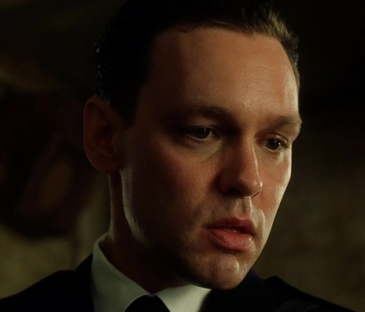
Percy Wetmore in “The Green Mile.”
Not All Story Timelines Have to Be Completely Linear
Some stories will begin with a tragic event in the beginning, then we see something like TWO DAYS EARLIER. This is not a flashback. This is merely a different way of plotting and a solid literary device. Though these types of stories might begin in a future moment, once the timeline goes back, it often stays there. Time then keeps pressing forward until the two points in time meet. There is no back-and-forth psychic whiplash.
Can these rules be broken? Sure. Pulp Fiction.

From the Quentin Tarantino film, “Pulp Fiction.”
But, I might add that Pulp Fiction ticked off as many people as who loved it (and this was a movie and visual so easier on the gray matter). Yet, even in Pulp Fiction (or The English Patient) eventually the jaunty timelines converged for those of us who’d gutted through being tossed all over the place.
***Note: I wanted to set The English Patient ON FIRE….but someone beat me.
But let me point out something interesting. If we snipped the scenes in either of these stories apart, we could set them side-by-side into a completely linear story with no spare parts.
Tomorrow, we will discuss why misused flashbacks can be a symptom of bigger issues/problems. But, I hope this helps you guys understand what I mean when referring to “a flashback” and the difference between a flashback versus parallel or non-linear timelines. Unorthodox plotting can be a literary device that enhances tension. Flashbacks, however, diffuse tension…and this is why they should be killed without pity.
I’m right.
It’s science :P.
What are your thoughts? Unless your thoughts are, but “But Kristen! Rules can be broken! Such-and-Scuh used flashbacks every page and now bathes in diamonds!” I know. And everyone hates her so I hope her money makes her happy. All rules can be broken and broken well.
Other thoughts than that? Did this help you guys see the difference in the “flashback” that irritates readers, editors and agents versus a parallel timeline or non-traditional plot structure?
I LOVE hearing from you!
To prove it and show my love, for the month of APRIL, everyone who leaves a comment I will put your name in a hat. If you comment and link back to my blog on your blog, you get your name in the hat twice. What do you win? The unvarnished truth from yours truly. I will pick a winner once a month and it will be a critique of the first 20 pages of your novel, or your query letter, or your synopsis (5 pages or less).
If you want more help with plot problems, antagonists, structure, beginnings, then I have a FANTASTIC class coming up to help you!
CLASS COMES WITH HANDOUTS AND FREE RECORDING.
Understanding the Antagonist
If you are struggling with plot or have a book that seems to be in the Never-Ending Hole of Chasing Your Tail or maybe you’d like to learn how to plot a series, I am also teaching my ever-popular Understanding the Antagonist Class on May 10th from NOON to 2:00 P.M. (A SATURDAY). This is a fabulous class for understanding all the different types of antagonists and how to use them to maintain and increase story tension.
Remember, a story is only as strong as its problem ;) . This is a GREAT class for streamlining a story and making it pitch-ready.
Additionally, why pay thousands for an editor or hundreds for a book doctor? This is a VERY affordable way to make sure your entire story is clear and interesting. Also, it will help you learn to plot far faster and cleaner in the future.
Again, use WANA10 for $10 off.
I’ll be running the First Five Pages again at the end of May, so stay tuned.
And, if you need help building a brand, social media platform, please check out my latest best-selling book, Rise of the Machines—Human Authors in a Digital World.





